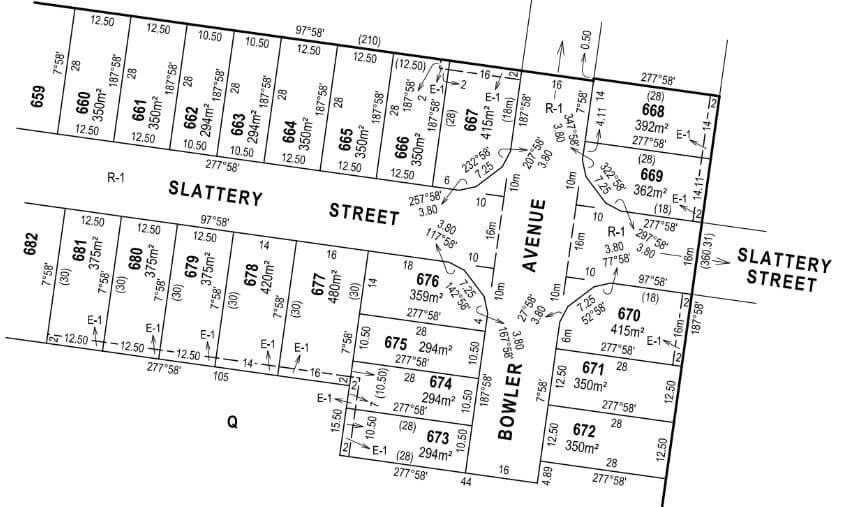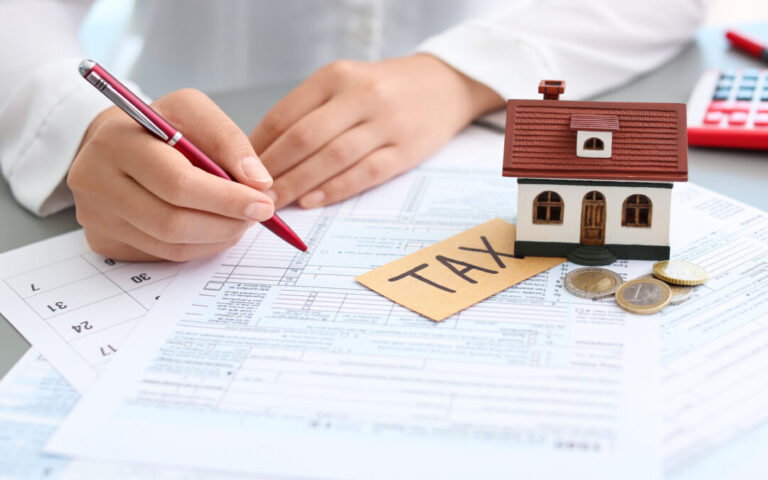How to Find an Easement on a Property | Follow 6 Simple Steps

An easement is a lawful right to utilize someone else’s land for a specific purpose. The land owner typically grants this right, allowing the easement holder to use the property in a particular way that would otherwise not be allowed.
For example, an easement might allow a utility company to run power lines across a chunk of land, even if the owner doesn’t want the power lines there.
Easements can be valuable assets, but they can also be a source of conflict between the holder of the easement and the owner of the land. It’s important to understand the terms of an easement before agreeing to create one, and it’s also important to make sure that the easement is properly recorded so that there is no confusion about who has the right to use the property and for what purpose.
How to Find an Easement on a Property?

Easements can be found in some ways, but they are typically either written into a deed or granted through an agreement between the two parties. Easements are often granted for things like power lines, pipelines, and railways, but they can also be granted for things like access to a body of water or the right to use someone else’s property for hunting or fishing.
Follow these below steps;
- Contact Land Surveyor
- Finding the Easement Location
- Record Searched in Database
- County Records Office
- Check for Easements at Your Local Government Offices and Websites
- Request for Survey of Easement
Contact land surveyor
One of the best ways to find out if there is an easement on a chunk of property is to contact a land surveyor. A land surveyor will be able to tell you if there are any easements on the property, and they will also be able to tell you what the easements are for
Look at county records:
Another way to find out if there is an easement on a chunk of property is to look at the county records. County records typically list all of the easements that have been granted for a particular piece of property, and they will also list the specific terms of each easement.
Ask the owner:
If you are unsure whether or not there is an easement on a chunk of property, you can always ask the owner. The property owner should be able to tell you if there is an easement and what it is for.
Check for easements at your local government offices and websites:
Another way to find out if there is an easement on a chunk of property is to check with your local government offices and websites. Many local governments keep records of all of the easements granted in their jurisdiction, which can be accessed online or in person.
Contact an attorney:
If you are still unsure whether there is an easement on a chunk of property, you may consider contacting an attorney. An attorney can look at the documents that created the easement and help you determine if it is still valid. Additionally, an attorney can advise you on how to protect your rights if you are involved in a dispute over an easement.
Finding the easement location:
Once you have determined that there is an easement on a chunk of property, the next step is to find the location of the easement. The location of the easement will typically be specified in the documents that created the easement, but it can also be found by looking at county records or asking the owner of the property.
Request for a survey of easement:
Suppose you believe that there is an easement on your property, but you cannot find the easement’s location. In that case, you may want to consider requesting a survey of the easement from a professional surveyor. A surveyor will be able to determine the exact location of the easement and will also be able to provide you with a map of the agreement. This map can help you avoid any potential conflicts with the agreement holder.
Time Required Finding an Easement on a Property

The amount of time it takes to find an easement on a chunk of property depends on several factors, including the size of the property, the number of easements that have been granted, and the location of the easements. However, it is typically possible to find an easement on a chunk of property within a few days or weeks.
Easements are typically granted for a specific time and can be renewed when that time expires. However, easements can also be terminated if the easement holder no longer needs to use the property for the purpose for which it was granted.
For example, an easement that allows a utility company to run power lines across a chunk of land might be terminated if the utility company is done with the purpose.
It’s important to understand the terms of an easement before agreeing to create one, and it’s also important to make sure that the easement is properly recorded so that there is no confusion about who has the right to use the property and for what purpose. Additionally, you may want to consider contacting an attorney if you are still unsure whether there is an easement on the property.
Types of Easement
There are two main types of easements:
- Affirmative
- Negative
Affirmative easements give the grantee the right to use the property for a specific purpose, such as accessing a road or using a utility line. Negative easements, on the other hand, prohibit the easement holder from using the property for a specific purpose, such as building a structure or planting trees.
How to Find a Permanent or a temporary Easement?
Before we dig into the how, let’s talk about these terms.
A permanent easement is an easement that is granted in perpetuity, meaning that it will last forever. Permanent easements are typically created by deed, will, or contract.
A temporary easement is an easement that is granted for a specific time. After the expiration of the term, the easement will terminate, and the holder will no longer have the right to use the property. Temporary easements are typically created by deed, will, or contract.
Responsibility of both parties
The maintenance of the easement, as well as the property, is the responsibility of the owner/grantee, while the other party should only be careful to avoid damage to the property or violation of any condition mentioned prior in the agreement. In addition, it is not considered professional to pause the easement unannounced.
Legal documentation required for an easement
For a detailed analysis of all the steps you need to follow, you need some guidance which you can get from:
- Looking for records of previous easements on the property. These easements will be publicly available at your local recorder’s office, and they will provide information about the dates and terms of the easement. The terms will give you an idea about what to expect and the dos and don’ts.
- The owners also have experience in dealing with such cases and should have this information readily available.
- Most importantly, hiring an attorney to help you search through the legal passage. An attorney will have experience in this area and will be able to guide you about the terms and conditions.
Now you need the following legal documentation:
- A contract between the two parties clearly stating all the terms and conditions like duration, points of violation, etc.
- The contract should have the proper signatures of both parties
- The landlord should have property deed or title papers with the details outlined
- Verbal easements are also pretty common.
Expert Opinion
It’s important to understand the terms of an easement before agreeing to create one, and it’s also important to make sure that the easement is properly recorded so that there is no confusion about who has the right to use the property and for what purpose. Additionally, you may want to consider contacting an attorney if you are still unsure whether there is an easement on the property.
References:





